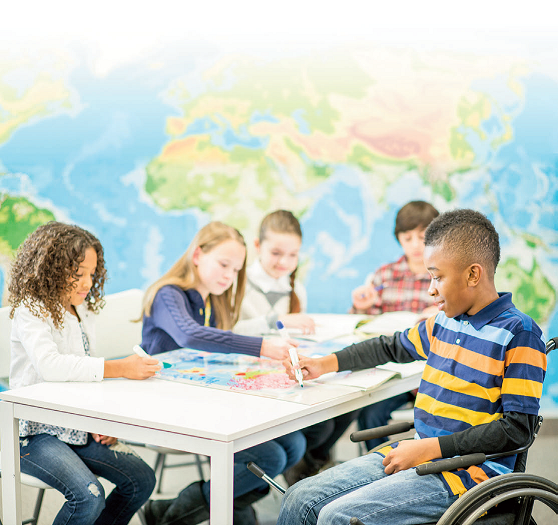by Oran Tkatchov
As our children put the past school year behind them during summer break, there might be many changes on the horizon that can be a source of anxiety for them. A new teacher? New building? New classmates? New routines? These changes can be overwhelming for all kids, but especially for those who need additional guidance in establishing routines and developing new relationships. Below are five suggestions that can help to minimize the stresses that come with changes in school routines.
- Communicate. Talk to your child about how she feels. What is she excited about? What is she nervous about? What questions does she have? Make sure to highlight all the wonderful opportunities she will be experiencing in the new environment and provide stories about what you enjoyed about school when you were in that grade.
- Review the Present Levels of Academic Achievement & Functional Performance (PLAAFP), which is an important part of your child’s Individual Education Plan (IEP). Make sure the PLAAFP is accurate and updated with current data, since a well-written PLAAFP provides the new teacher with a lot of information on what your child can currently do and what your child presently knows as well as what strategies are in place to assist your child in the classroom. If needed, complement the PLAAFP with a “cheat sheet” for the new teacher; list your child’s strengths and weakness, what worked in the last classroom, and key details about your child, such as her interests and things that tend to cause her frustration. Discuss with the teacher any supports that are needed for your child to best participate in communal or recreational activities.
- Visit the new teacher and classroom prior to the first day of school. Previewing the new learning environment might lower some anxiety for your child. Point out for your child all the important places in the classroom (where to hang your jacket, where to turn in work, where the daily schedule will be, etc.). Have the teacher explain what the daily routine is and allow time for your child to ask questions. If needed, in collaboration with the teacher, create a picture schedule that the teacher can keep in the classroom to assist. Go over the PLAAFP and additional information on your “cheat sheet” with the teacher; let them know anything that is important to your child as well as your family. If possible, also tour other areas of the campus, such as the cafeteria or commons.
- Meet the new principal. If it is a new school, schedule a formal time to talk to the principal about your child. Have the same polite conversation with the principal as you did with the teacher to help make sure all parties have the same information.
- Stick with what’s working at home, but also plan for adjustments. What was the morning routine that was used to get your child up in the morning? If something worked, then don’t mess with it if you don’t have to. If your child’s class time is to change, start practicing waking up earlier toward the end of the summer. Start to anticipate how other routines (breakfast, brushing teeth) might be affected. Although we know change is inevitable, anything that can be kept constant can increase the comfort level for both you and your child.
All children can experience anxiety when transitioning from one school year to the next. Just as with any other transition or change in life, preparation and communication are essential to improving the chance of success. Summer is a wonderful time for children, especially those with special needs, to not only unwind from the previous school year but also to prepare for what lies ahead so that they can begin a new year with confidence.
Oran Tkatchov is a former teacher, school administrator and director of professional development in the areas of special education and school improvement at the Arizona Department of Education. He currently supports professional learning at the Arizona State Schools for the Deaf and the Blind. His latest book, Success for Every Student – A Guide to Teaching and Learning, is now available.

